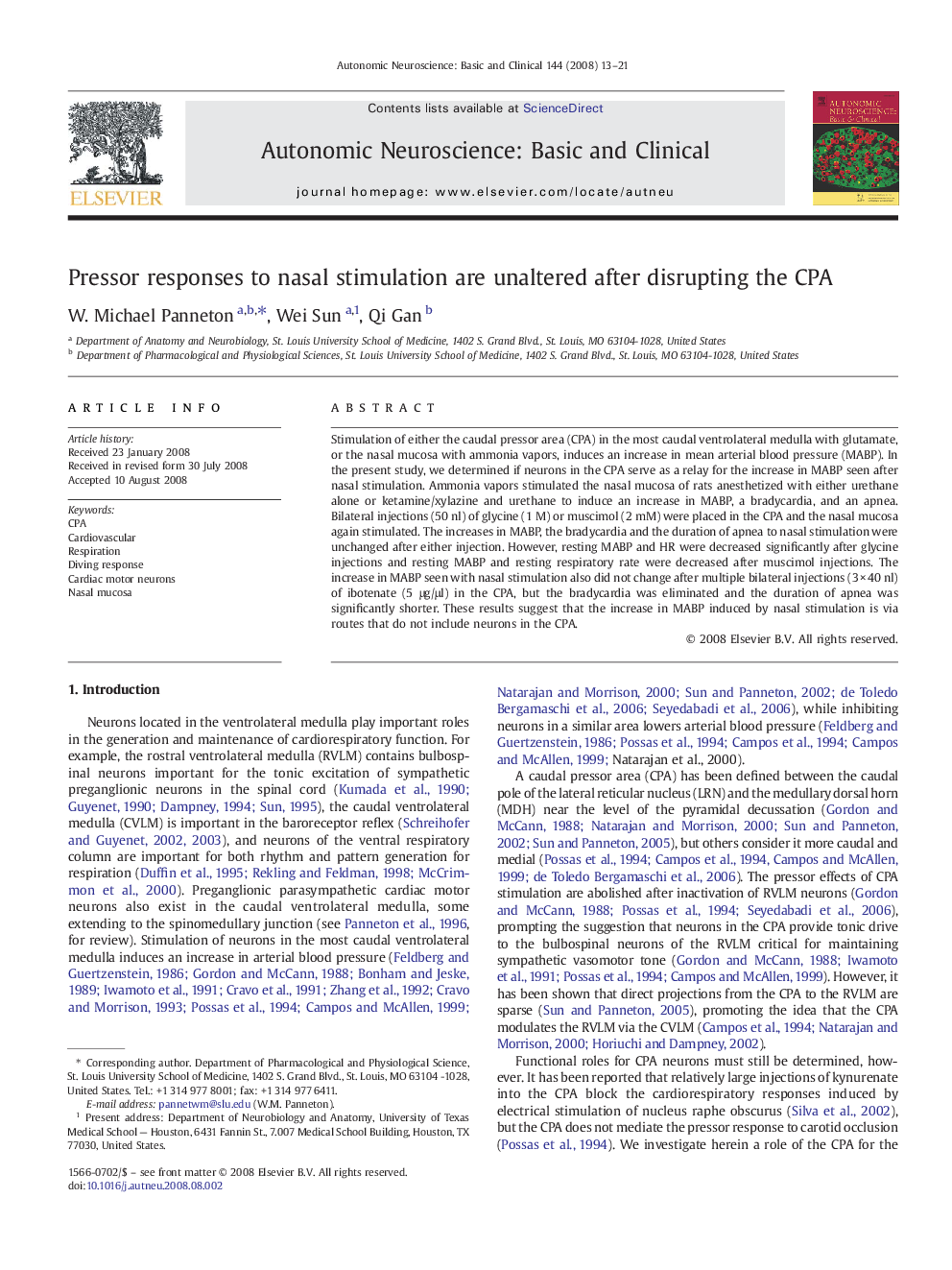| Article ID | Journal | Published Year | Pages | File Type |
|---|---|---|---|---|
| 3035498 | Autonomic Neuroscience | 2008 | 9 Pages |
Stimulation of either the caudal pressor area (CPA) in the most caudal ventrolateral medulla with glutamate, or the nasal mucosa with ammonia vapors, induces an increase in mean arterial blood pressure (MABP). In the present study, we determined if neurons in the CPA serve as a relay for the increase in MABP seen after nasal stimulation. Ammonia vapors stimulated the nasal mucosa of rats anesthetized with either urethane alone or ketamine/xylazine and urethane to induce an increase in MABP, a bradycardia, and an apnea. Bilateral injections (50 nl) of glycine (1 M) or muscimol (2 mM) were placed in the CPA and the nasal mucosa again stimulated. The increases in MABP, the bradycardia and the duration of apnea to nasal stimulation were unchanged after either injection. However, resting MABP and HR were decreased significantly after glycine injections and resting MABP and resting respiratory rate were decreased after muscimol injections. The increase in MABP seen with nasal stimulation also did not change after multiple bilateral injections (3 × 40 nl) of ibotenate (5 μg/μl) in the CPA, but the bradycardia was eliminated and the duration of apnea was significantly shorter. These results suggest that the increase in MABP induced by nasal stimulation is via routes that do not include neurons in the CPA.
